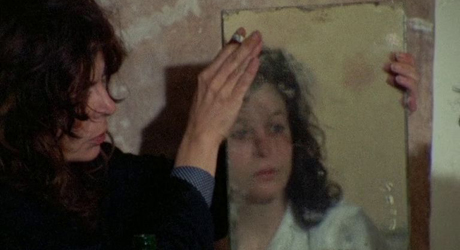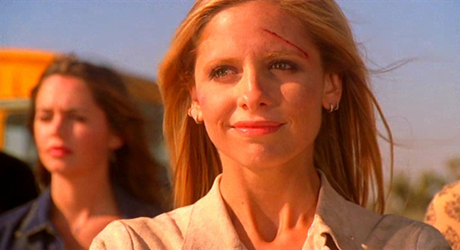
It dawned on me before sitting down to write this piece that maybe I am not at all qualified to write about disability, illness and filmmaking, as I haven’t been paying very close attention to the community of disabled or chronically ill filmmakers. In order to rectify this situation, or at least to take a baby step in the right direction, I decided to ask my Facebook community how many disabled or chronically ill filmmakers and actors they could name who have won Academy Awards. Between the 15 friends who responded, all kinds of names were thrown out: Selma Blair, Michael J. Fox, Hugo Weaving, Sarah Hyland, Selena Gomez, Dory Previn, Richard Burton, Peter Dinklage, Shannen Doherty, Will Smith, Jim Carey, T-Boz, Toni Braxton, Darryl Hannah. But I was disappointed to see that only two of the names mentioned were actual Oscar winners: Marlee Matlin (a deaf actress) and Harold Russell (an amputee actor). All of my Google searches left me equally as disappointed: there is a whole constellation of smaller, important conversations going on, but it is hard to find a feature on the Oscars and disability/chronic illness in major publications.
It is quite possible that many Oscar winners would place themselves somewhere on the spectrum of disability. But some may feel conflicted about publicizing their health status either because it might jeopardize future employment opportunities, or because they don’t want disclosing their illness to be seen as manipulative, or simply because they would rather keep their health matters private. I can understand each of these mindsets, and have chosen to remain anonymous while writing this article for similar reasons. The decision to keep our health matters confidential is in many ways a question of safety: we do not owe the world any explanations about our bodies, and sharing too much of our personal lives as artists can come at a cost. This situation makes it very difficult to keep tabs on how disabled and chronically ill filmmakers are represented in our film culture, but shouldn’t prevent major gatekeepers from seeking out representation from the disability community.
On the other hand, I do feel extremely qualified to chime in about the intersection of film and disability; although I have trouble finding role models in the greater world of film directors, I have my own experience to go by. And it is extremely awkward to write about: there is a great risk that one could be viewed as self-pitying, attention-seeking, manipulating one’s narrative to seek greater opportunity, or, on the other side of things, disclosing too many personal details and risking potential future career opportunities by disclosing ineffectiveness. The alternative is to stay quiet, to ignore the gaping holes in conversation, to ignore the need for accommodation. To sequester people with illnesses or disabilities where they won’t trouble anyone, left disengaged and excluded from opportunities within the film industry.
My first understanding of the ways in which illness excludes comes from my childhood. At age six, I was found to be asthmatic, and once a day had to be strapped into a portable nebulizer (a breathing therapy device). It was a painless experience but it meant that for a long stretch of time every day I couldn’t join with all the other children. I’d be up at a lake and hear all the other kids laughing, swimming, all while I had to sit out. But from that exclusion there developed a sense of observation: once removed from the action, I could look in from the outside, commenting on the sounds and sights of a scene. To be excluded can set one down an artistic path, grounding one’s experience in careful scrutiny of every environment, catching details about personalities and surroundings, thinking about the world in a very different way. Apart from those bouts of asthma, which I grew out of, I lived my entire childhood and teenage years as a healthy, active youth, taking fully for granted being able-bodied.
After my first year of university, I handed in my last paper on Nietzsche, hopped on a train and by the time I returned home to Toronto, began experiencing my first symptoms of mania, leading to a diagnosis of bipolar I. For the next couple of years, I was in and out of the hospital with symptoms of extreme euphorias and depressions. I would pull all-nighters, painting with watercolours and writing poetry, ecstatic and so excited about the world. In this state of hyperactivity, I would stop eating for weeks at a time and then I would spend months and months curled up into a tiny ball in bed, wishing I were dead.
This period of swings from extreme high to extreme low lasted for five years and left me feeling sometimes scared, sometimes inspired, sometimes apathetic. But the need for a narrative understanding of my life and the world remained a constant. Somewhere in that time I decided to enrol in film school; I had always loved watching films and had edited my own experimental films throughout high school. Keeping afloat in film school was hard through all those hospitalizations, but eventually I graduated and continued making movies.
But to make a movie is a physical act—one that is aided by the privilege of having a healthy body and a concentrated mind. A cinematographer or sound recordist needs to be strong enough to carry their equipment. A director and actors need to be able to stay alert and relatively mobile for hours on end. I learned while in school that my bipolar would prevent me from engaging with certain types of filmmaking. At this point in my life it was mostly the overnight shoots that I had to refrain from. Every so often, you’d hear a crazy story about a 30-hour shoot with no sleep breaks. I couldn’t take part in those for fear of igniting another bout of mania. But there was something else that changed in my cognitive abilities: my ability to process information had been dulled. Thanks to the medication I was on, I was slower, less able to make quick calculations in my mind. Slower physically, too—I had put on a lot of weight. So filmmaking became a bit of a trickier exercise.
While there were some new challenges I had to face as I fought to find that middle ground between mania and depression, filmmaking became an outlet for all the pain that had been building within me. In those first years of diagnosis I had to keep the disease a secret; only trusted friends knew about the internal war being waged within the confines of my mind. But storytelling became a way of navigating the madness: a soothing balm to calm my growing anxieties; a thing to keep me sane and alive. I gravitated towards love stories, simple and sweet and the total opposite of the chaos I was trying to quiet within me. Thanks to modern medicine, I was able to control the disease and have lived a stable life for almost ten years…but I can’t underplay the ways filmmaking also helped.
In my early twenties, my films were not super successful; they weren’t playing in festivals or winning awards, but I knew they served a very important purpose. I graduated from film school, landed a job programming films for a Canadian airline, and was finally starting to feel at peace.
Until, that is, very shortly after graduating when I was diagnosed with a second disease, psoriatic arthritis, that caused great pain in all of my joints, and which prevented me from walking for a period of about five months. Suddenly, new struggles: a kind of physical pain that crept through all my joints in the early hours of the morning. No heating pad, no amount of morphine could quiet the screaming. Days where I could hardly walk to the bathroom, late nights spent in emergency rooms with swollen knees and elbows and ankles. A disease that, in its nastiest iterations, would never allow for filmmaking of any kind, not under any circumstance.
I am only able to write and direct my own films because my collaborators make room for my conditions. […] Sometimes I am a challenge to work with. But space is made for me.
The disease has calmed down over the past five years, though I still wrestle with it, going through surgeries and emergency room visits. It has left me with a limp that I am still trying to correct, days full of exhaustion and anxiety about my future. But it has also left me with a great deal of time to spend daydreaming: to daydream is to survive, to hope, to continue forward. Much like my childhood asthmatic self, and because my illness has led me down a pretty unconventional life path (one where I am on the outside observing the action) I have spent a great deal of time thinking about the world instead of physically participating in it. Some friends of mine recently brought up the connection between Proust’s writing and his illness: I wonder if having certain kinds of conditions can, sometimes, lead to a life more full of observation, as opposed to action. At least, that has been my experience.
Despite this second disease, I have still been making movies. I have produced four shorts in the past four years; these little stories propel me forward when the rest of me wants to crawl into a dark hole and never emerge. I often write and direct my own stories but sometimes will collaborate with other creators. I am limited, as a filmmaker, in terms of my physical and mental strength, but I always take these limitations into account when writing a script. I often try to complete a short within one day of shooting, in one singular location.
I’m often the one to take interviews and deliver Q&As at screenings of my films but really there is a small army of people who make these films happen. If there’s one point I really want to make, it’s this: I am only able to write and direct my own films because my collaborators make room for my conditions. They agree to schedule our days so that we aren’t overly exhausted. They see the struggle I have walking and make sure that I always have a seat. They know I have a mood disorder and they know I live with physical pain. Sometimes I am a challenge to work with. But space is made for me.
There have been some great conversations about representation at the Oscars, but so few of them are geared towards the ways disability and chronic illness act as barriers to the awards podium. There’s a reason why there are so few disabled and chronically ill people walking home with an Academy Award: if you are sick enough, it can be very, very challenging to find yourself on a film set, let alone get out of bed. But I hope for a world where those who feel truly hidden away in their bedrooms suffering from their illnesses can feel included in the challenges and rewards of moviemaking.




